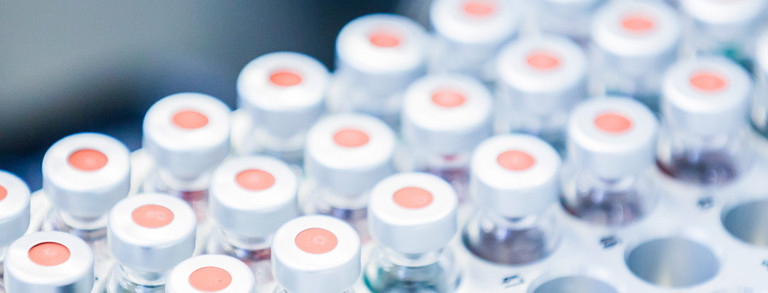Projects
The development of potentially efficacious pharmaceuticals is hindered by their poor aqueous solubilities which result in a poor bioavailability. Our research focus on the dissolution mechanism and rate of formulated poorly water-soluble pharmaceuticals in solutions with experiments and theoretical modeling. It is expected that the research could provide useful knowledge for the formulation strategy development of poorly water-soluble amorphous pharmaceuticals
More than 90% of newly-developed active pharmaceutical ingredients (API) are currently rejected during drug development due to their low bioavailability. One promising approach to overcome this limitation is the formulation of an API in its amorphous state. This thermodynamically instable state is effectively stabilized by incorporating the API in a polymeric matrix. The project focuses on the experimental investigation and thermodynamic modeling of the amorphous-amorphous phase separation in API/polymer systems.
Thermodynamic properties (e.g. activity coefficients and osmotic pressures) are often assumed not to depend on pressure. However, this assumption is only valid for systems at a limited pressure range. It is known that high pressure has a significant influence on thermodynamic properties not only of gases but also of condensed phases. In this project the influence of high pressure and solutes on thermodynamic properties of biological systems is investigated. Furthermore, pressure and solute influence on kinetics of peptide hydrolysis are investigated.
Lipid-based drug delivery systems (LBDDS) are a promising formulation strategy for new active pharmaceutical ingredients (APIs) as they significantly enhance the bioavailability (which is determined by the API solubility in water and API absorption in the GIT). This project focuses on the experimental investigation and thermodynamic modeling of the phase behavior of LBDDS.
Many Active Pharmaceutical Ingredients (API) might be present in different solid states (different polymorphs, hydrates, solvates, salts, or cocrystals) [1]. All those solid forms result in completely different physico-chemical properties and therefore need to be characterized in detail during the development of a pharmaceutical formulation. Commonly, the different solid forms of an API are determined via time-consuming and expensive screening approaches.
One of the biggest challenges in pharmaceutical development is the poor solubility of most active pharmaceutical ingredients (APIs) in the fluids of the gastrointestinal tract. A promising strategy to overcome this solubility limit is dissolving the API in a polymer matrix, generating a so-called amorphous solid dispersion (ASD) formulation. In this project, the influence of the preparation method and different storage conditions on the long-term stability of ASDs against API crystallization is investigated.
The aim of this work is to thermodynamically describe the reductive amination and predict solvent effects on reaction equilibrium and reaction kinetics.
Active Pharmaceutical ingredients (APIs) with a poor aqueous solubility present a major challenge in the pharmaceutical industry because of the resulting poor bioavailability. An established strategy to overcome this limitation is incorporating the API in a polymeric matrix, generating a so-called amorphous solid dispersion (ASD). An ASD might be produced via solvent-based processes, e.g. spray drying. The organic solvent used during the preparation might influence decisively the product quality of ASD formulations.
Further information
The dissolution of pharmaceutical formulations determines the bioavailability and therefore plays a key role in the development of drug products. One way to increase the solubility of active pharmaceutical ingredients (APIs) is to incorporate them into a polymer matrix as amorphous API, which is referred to as an amorphous solid dispersion (ASD). In order to avoid recrystallization during dissolution, it is necessary to investigate the release mechanism and to develop suitable models for prediction.
The poor aqueous solubility of active pharmaceutical ingredients (APIs) is a major challenge in pharmaceutical industry as it leads to low bioavailability. Stabilizing APIs in polymers and thus producing an Amorphous Solid Dispersion (ASD) has proven to be a successful way to overcome this issue [1]. ASDs are often thermodynamically unstable under storage conditions, such that re-crystallization of the API will occur. Thereby, a strong dependency of the crystallization kinetics on the storage conditions is observed, whereby molecular mobility turns out to be a key factor [2].
Surfactants are used extensively in industrial and pharmaceutical applications, exploiting their effect on the aqueous solubility of hydrophobic compounds. This project aims at developing an aggregation model to be combined PC-SAFT allowing for predicting the formation of surfactant aggregates and their influence on the solubility of pharmaceutical ingredients.







